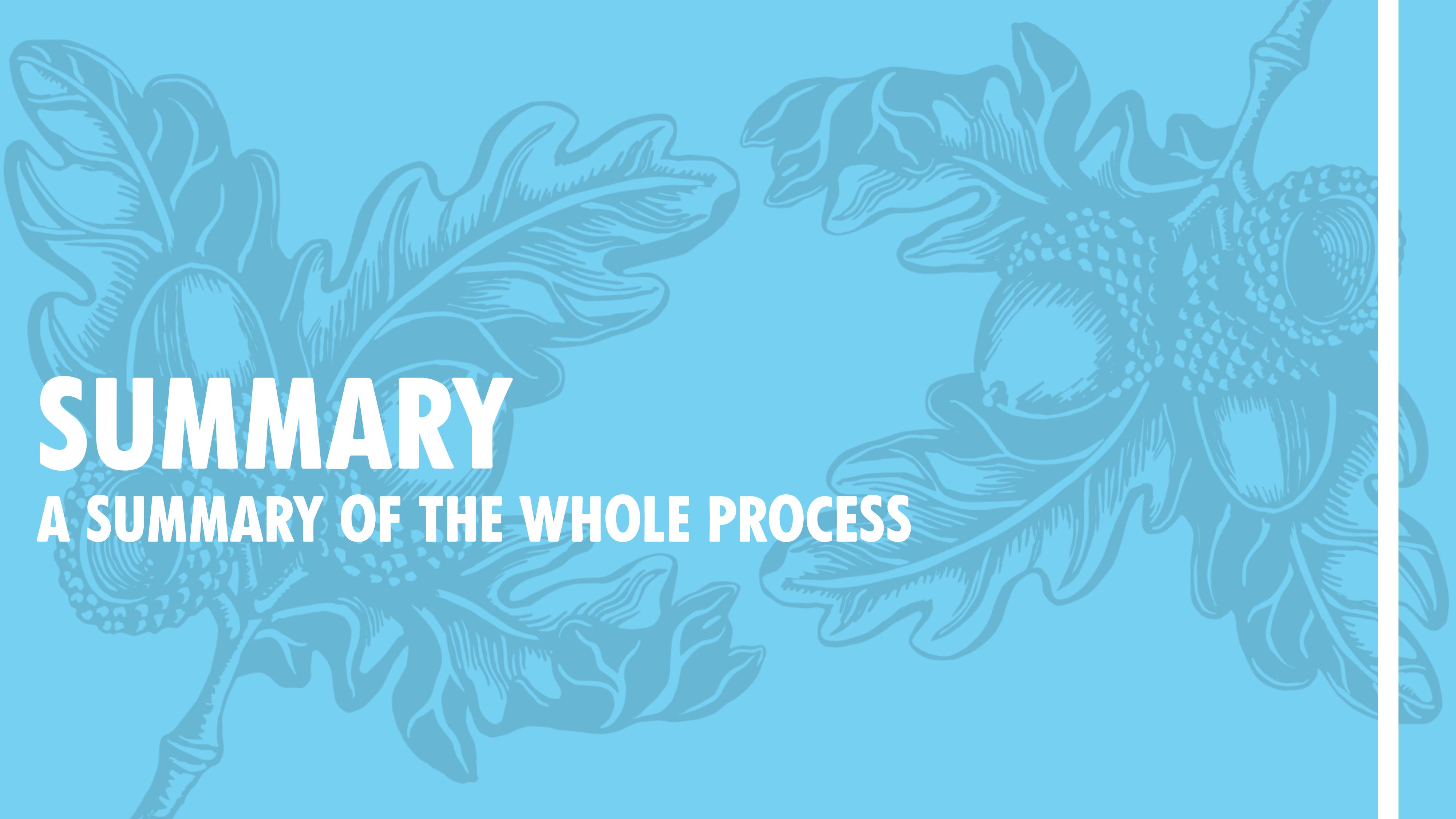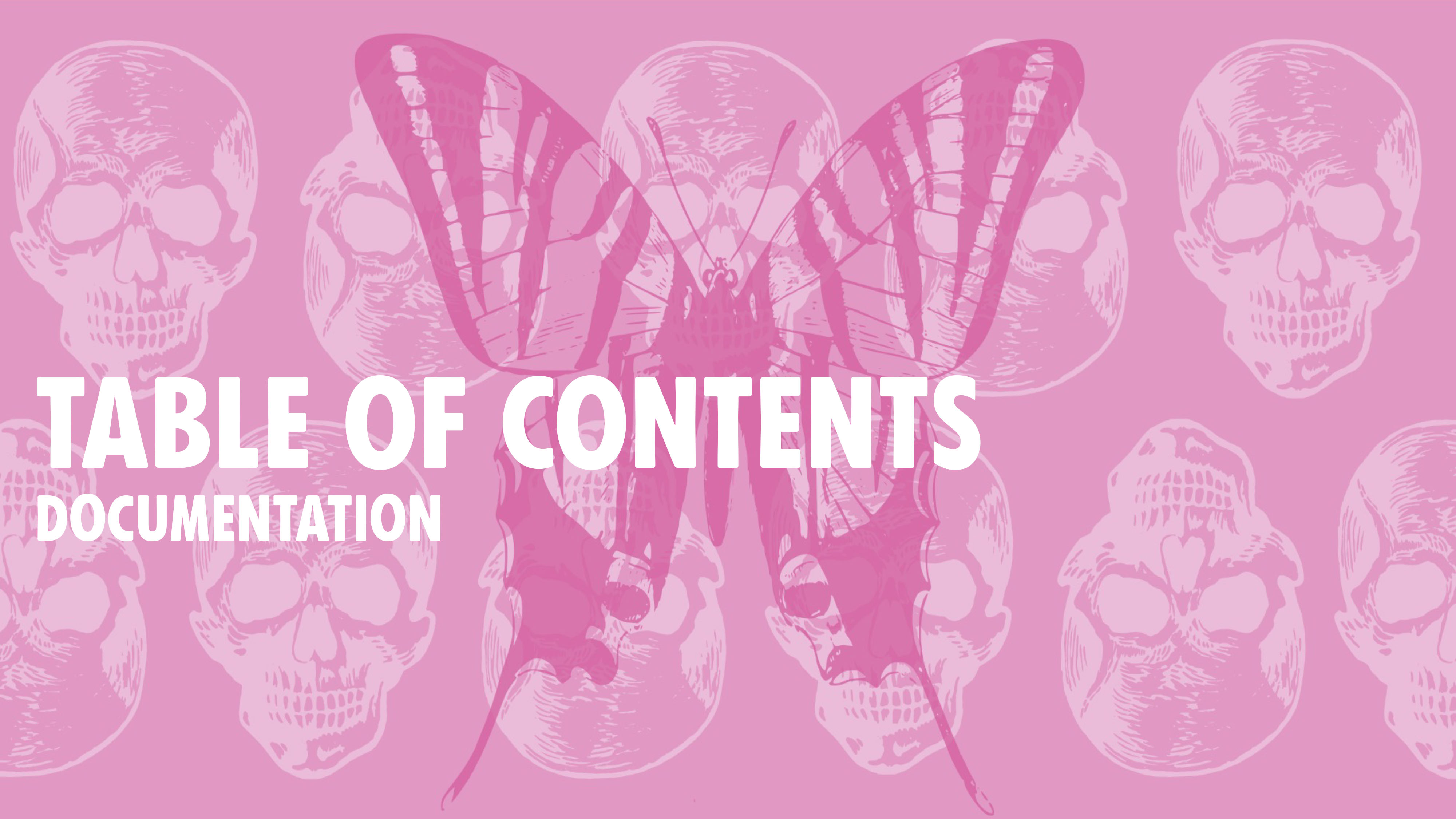Week 23
Written on February 9th, 2024 by Laura Weller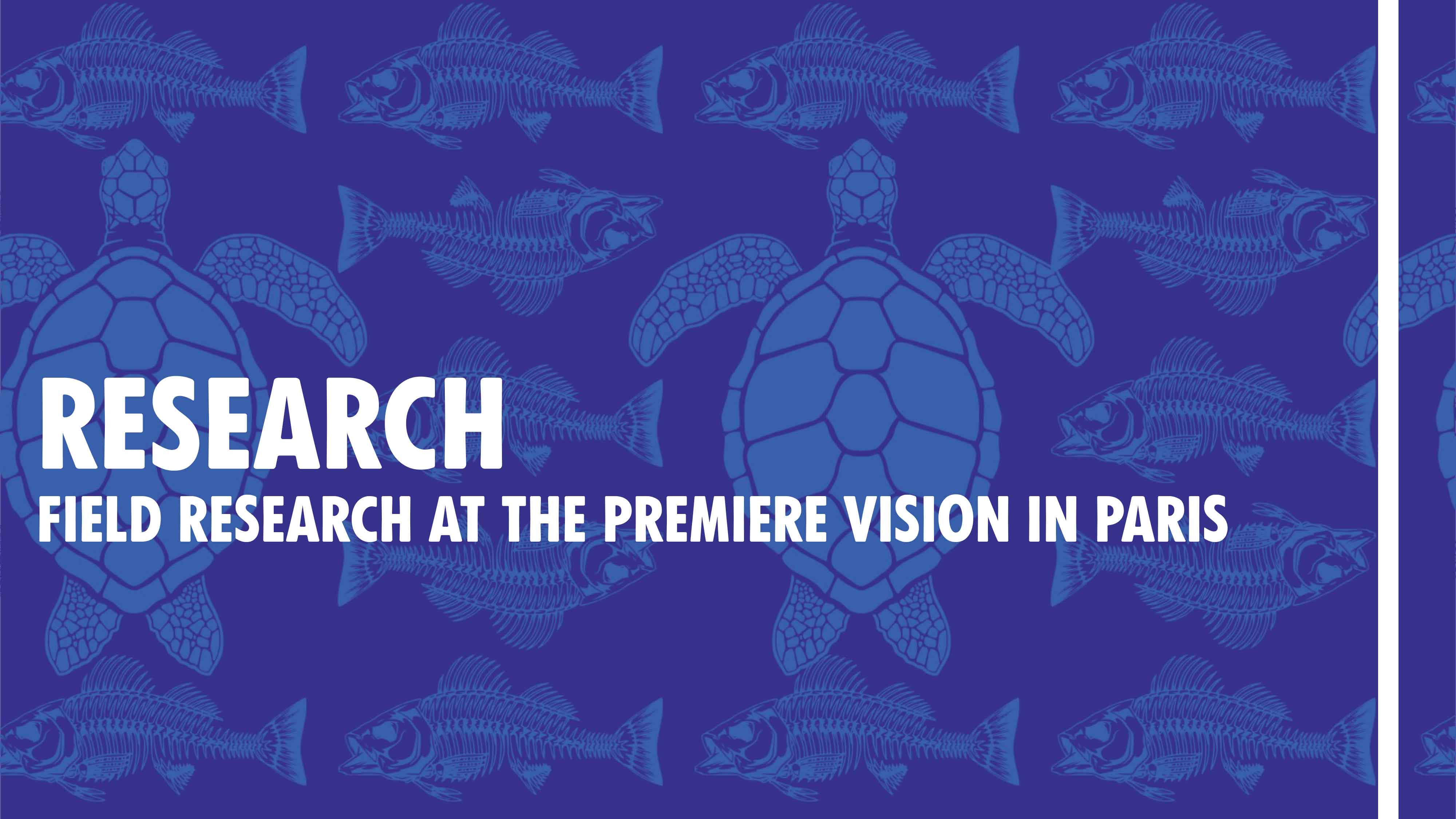
In the first week of the 2nd semester I went with the graduation students to the Premiere Vision in Paris. In this week I searched for inspiration on anything. I came back with much practical information on how I could work on technical solutions with my biomaterial.
You can see below some images and technical solutions that are conntected to it.
Buttons
During my visit in Paris I have walked much and during those walks I tried to find a solution in regards to my button situation. Since I tried to 3D print my buttons with the 3D printer and didn’t succeed, I had to find another solution. I found this is wooden buttons. In Paris there is a button shop that makes wooden buttons. The lady handcrafts her own buttons and paints them. The buttons are made of 100% wood and therefore biodegradable. See below the images of the two buttons that I bought:
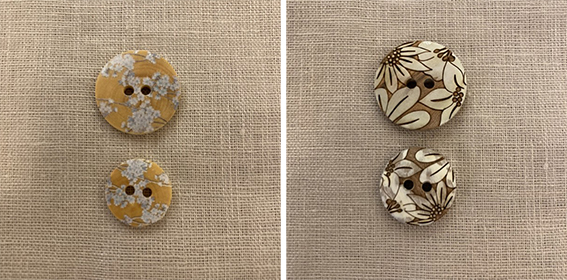
Strech
In the Premiere Vision and the Musee Arts Decoratives I saw many fabric manipulations, both as fabric on itself but also applicated within the garment. The manipulation caused a non-strech fabric to give strech. These manipulations I could possible apply if I want to add a stretch waistband to pants for example. Testing these manipulations with the biomaterial is something that I could try to see if the manipulations also work on the material that I’d like to work with.
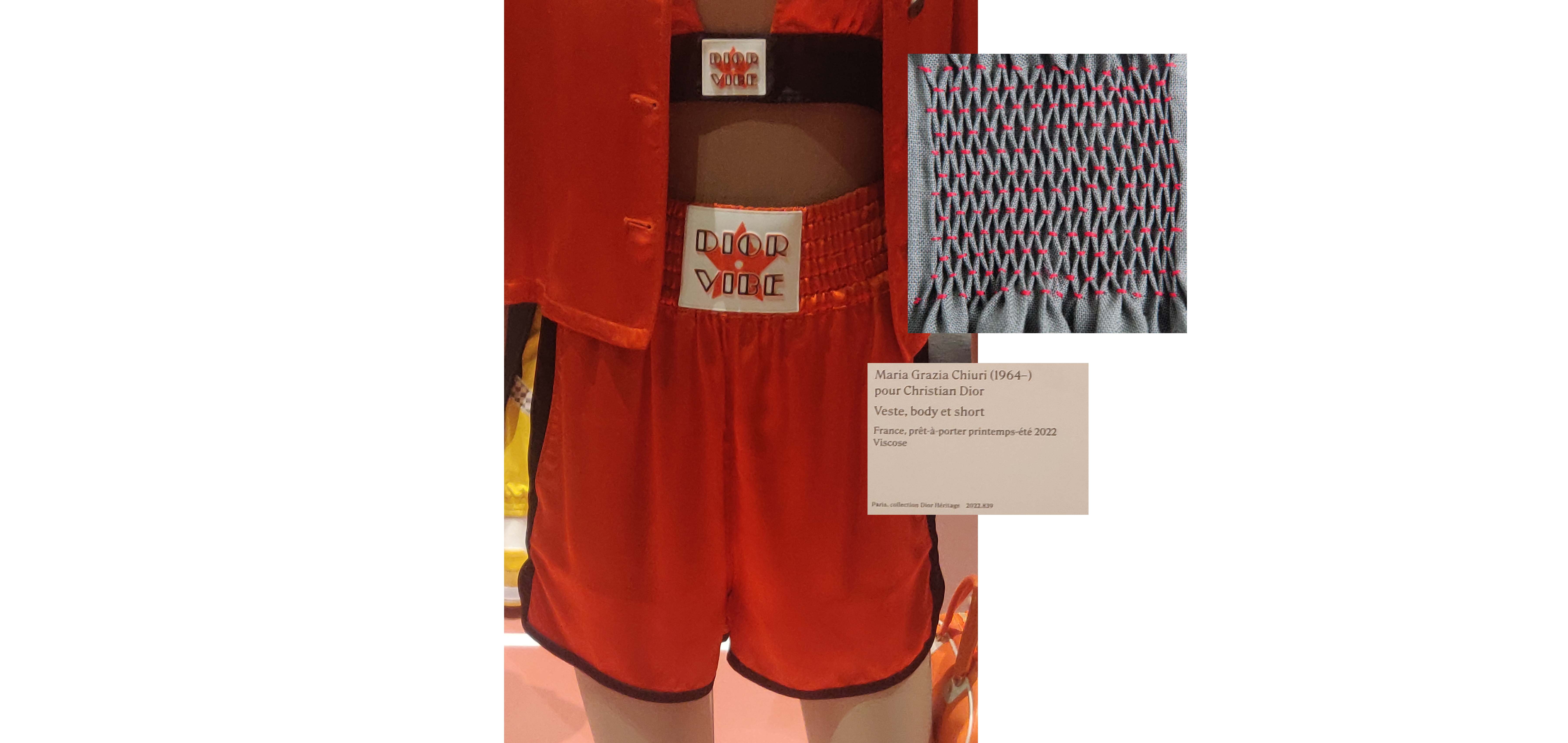
Breathability
At the Premiere Vision I also saw more gore-tex textiles that had little holes in them. This gave an extra aesthetic to the materials, but it also added breathability to the material. This is something I could also do with my biomaterial through the lasercutter. It also made me think of different cutting techniques on places where the material needs to stretch more then usual. Little pattern cuts (that can for exmaple make wood also bendable) could be integrated in the material to give the wearer more comfort in wearing the garment.
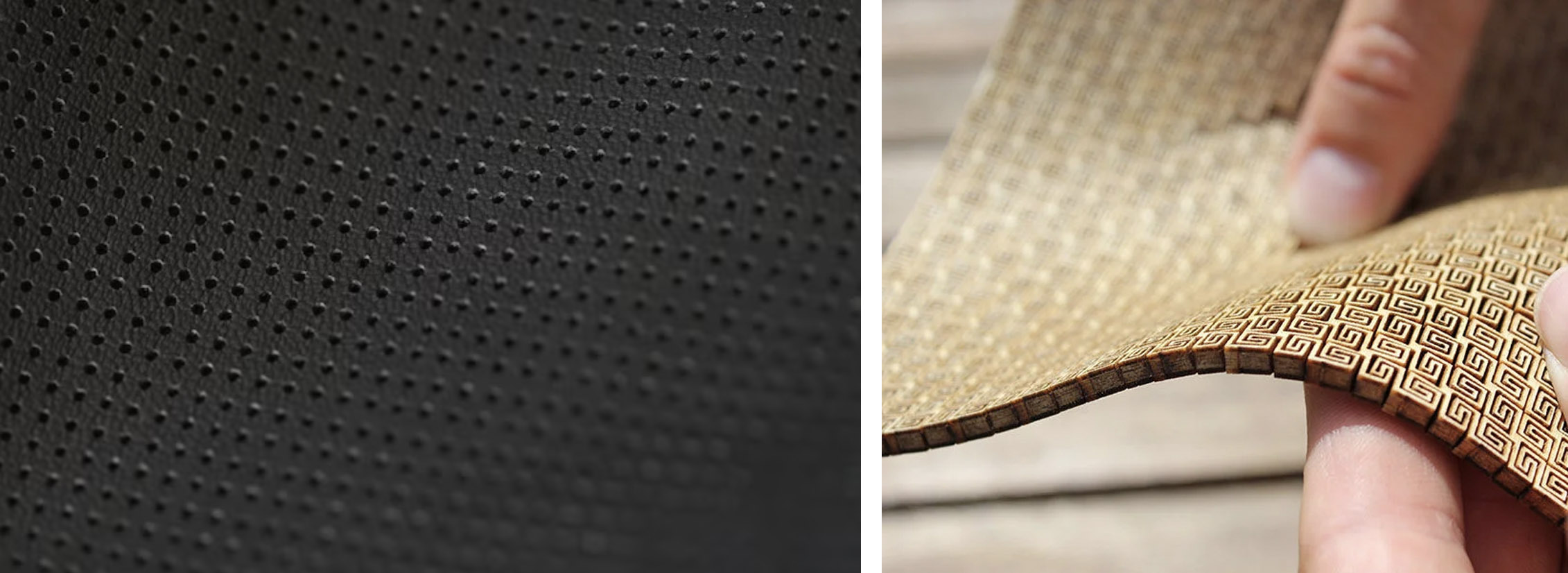
Smart pattern cutting techniques
At the Musee Arts Decoratives I saw old sports garments. Those garments have no zippers, since the zipper wasn’t invented back then, but they are designed for maximal comfort during exersize. This gave very smart pattern cutting techniques where non-strech garments can be worn without any buttons or hardware. These techniques I can use in my designs as well, to circumvent the big hardware issue.
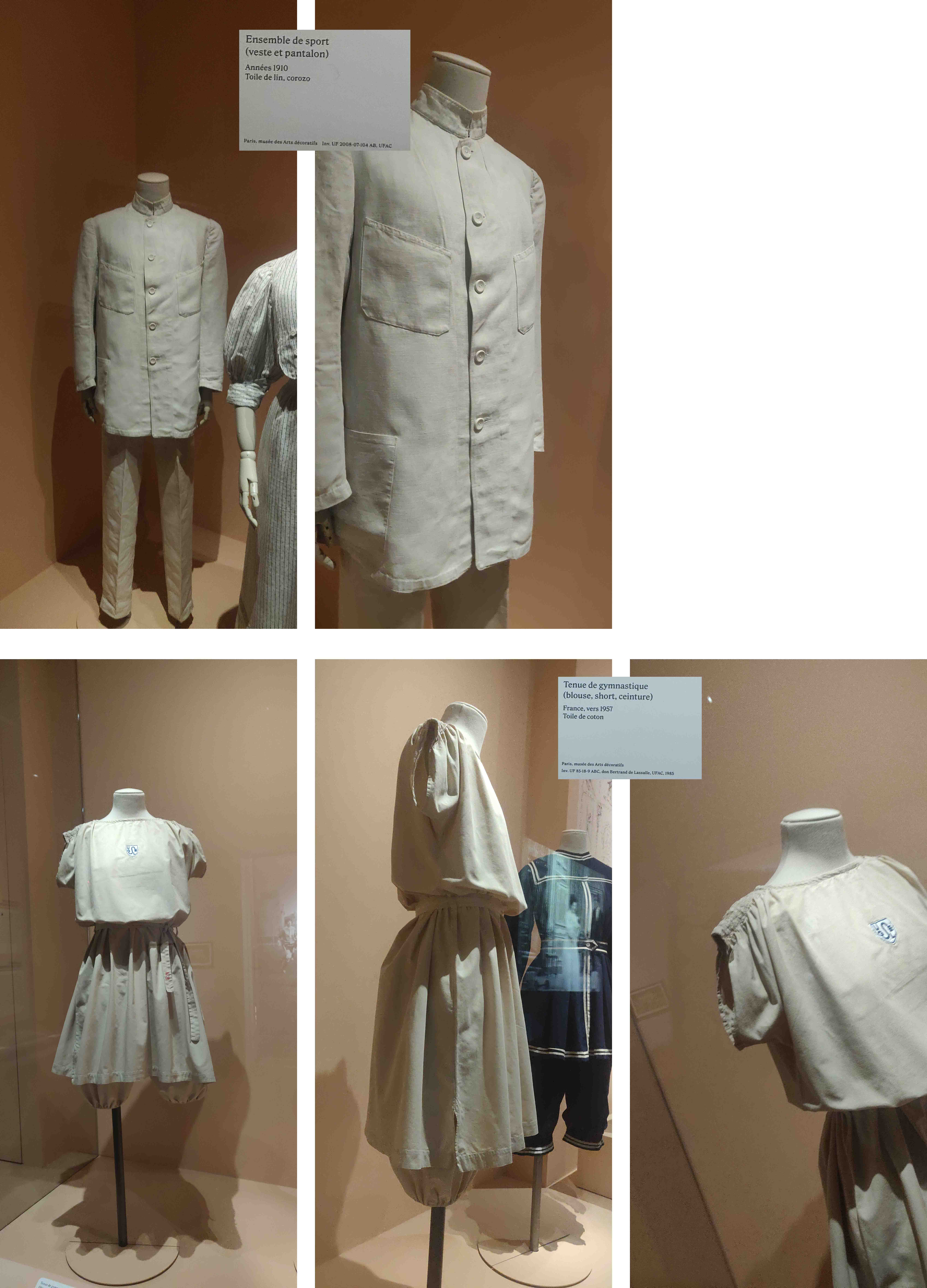
Anonymity for rebels
To give an extra addition to the garments, I was inspired on the streets of Paris, where I saw a shark harness. The hood of the garment could be closed with a zipper all the way up, preventing people to see the face of the wearer. This is something I could also create with biomaterials, making the wearer or protester anonymous.
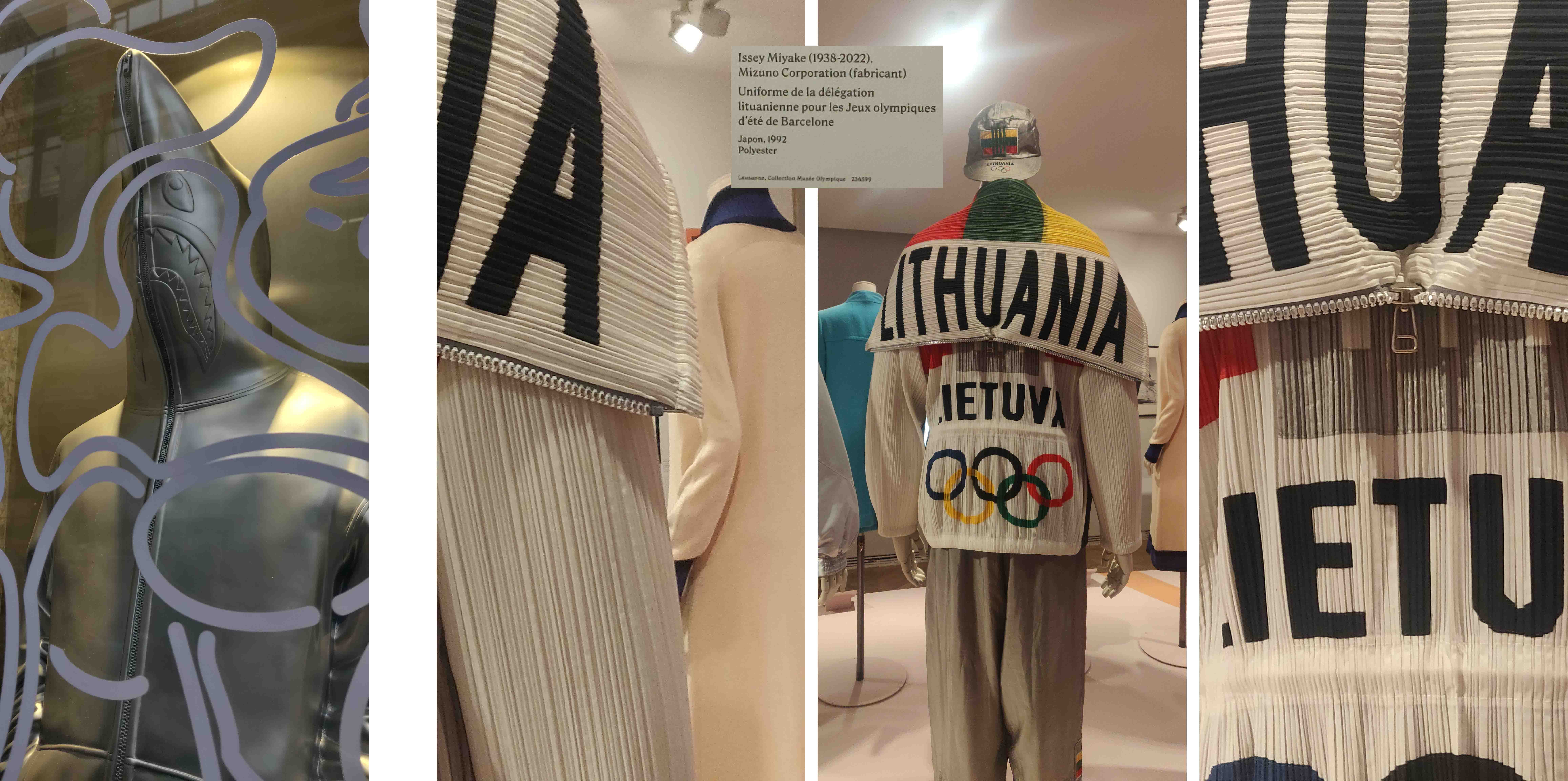
Patches for protection
At the Musee Arts Decoratives I saw patchwork on knees and albows to protect the wearer during sports. Ths patchwork was beautifully decorated, something that I could also do with XR decorations. This could add print and practical protection onto the garment all together.
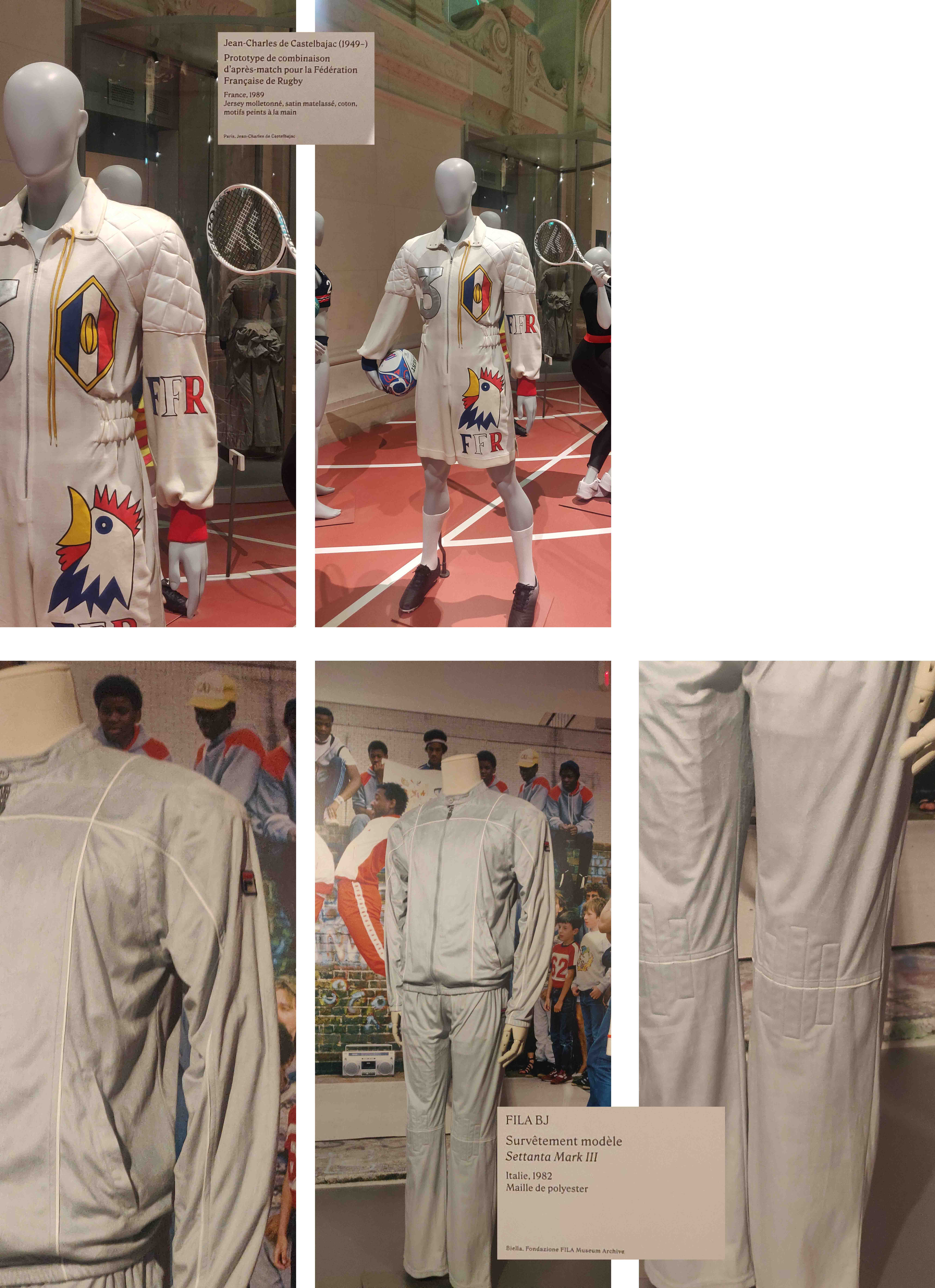
More ways for print
At the Premiere Vision I saw many different applications of print and some spoke to me since they had possibilities in durable and sustainable printing on biomaterials. Some prints where fabrics on top of other fabrics, some prints had embroidery in them and some prints were done by angraving or vaccuum forming. Especially vaccuum forming and embroidery caught my attention. Vaccuum forming because it brings relief to the prints and can make certain things pop out. Embroidery because I can embroider with linen yarns, which keep the garments biodegradable and also fit the skeleton imagery that XR always uses in their campaigns.
Branding the collection
The book “Branded protest : the power of branding and its influence on protest movements” from Ingeborg Bloem and Klaus Kempenaars also influenced me. In the book you can find an interview with the branding team from XR in Brittain. This team explains where the logo and campaign material comes from and how it can be used. This interview really opened my eyes in terms of color usages XR uses and prints. The team is really good at branding XR and I think my clothing line should be correspoding with their branding theme. When visiting the Maison Europeenne de la Photographie I saw an exhibition of Viviane Sassen. Her work made me think more of the photoshoot and the way of how I would present my collection. Even though the style Viviane Sasses uses is not my style, I do understand that I need to look more into this. I think finding inspiration from XR photographers would be a start.
